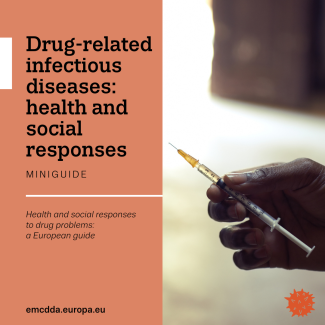Responding to drug-related infectious diseases: EMCDDA mini guide

Sharing drug injecting equipment increases the risk of transmitting and acquiring blood-borne infections, such as HIV and hepatitis B and C. While hepatitis C is the most prevalent blood-borne viral infection among people who inject drugs (PWID), injecting drug use remains an important mode of HIV transmission in some EU countries, and local outbreaks continue to occur. Despite falling HIV transmission rates in recent years, more than 1 in 10 new AIDS cases in the EU are still attributed to injecting drug use. This may signal late diagnosis or poor case management, both of which are avoidable.
Opioids, mainly heroin, are the predominant drugs injected in Europe, however, in recent years, there have been indications that the injection of stimulants has been on the increase. Stimulant injecting has been associated with particularly risky injection practices and a number of HIV outbreaks.
This miniguide highlights a range of measures for preventing and controlling infectious diseases among PWID, including routine testing, promoting safer injecting behaviour and ensuring access to opioid agonist treatment. It places focus on interventions that have proven to be beneficial in this area, such as the provision of sterile needles and syringes and of antiviral treatments.